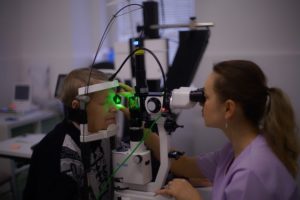High blood sugar, also known as hyperglycemia is a condition that occurs as a result of a buildup of too much glucose in the blood. Although this is more often a concern for people with diabetes it can also occur in people suffering from other conditions as well as perfectly healthy individuals.
The main goal of a diabetes treatment plan is blood sugar control. Hyperglycemia or high blood sugar can affect both type 1 and type 2 diabetes patients. There are 2 main kinds of high blood sugar:
-
Fasting hyperglycemia
This is a condition that occurs when blood sugar levels exceed 130 mg/dL after not drinking or eating for a period of at least 8 hours.
-
After-meal or postprandial hyperglycemia mg/dL
 This is when blood glucose levels exceed hours after eating. For people without diabetes, their blood sugar levels rarely exceed mg/dL after meals, unless they are really large.
This is when blood glucose levels exceed hours after eating. For people without diabetes, their blood sugar levels rarely exceed mg/dL after meals, unless they are really large.
Ongoing or frequent high blood glucose levels can cause damage to blood vessels, nerves, and organs. Hyperglycemia can also lead to other potentially life-threatening conditions. For instance, people with type 1 diabetes are particularly prone to ketoacidosis, as a result of excess acids in the bloodstream.
When it comes to type 2 diabetes patients or people who are at risk for it, hyperglycemia can lead to hyperglycemic hyperosmolar non-ketotic syndrome (HHNS), a condition where the body’s ability to process sugar is significantly impaired. It’s mainly characterized by frequent urination at first and less frequent later on. As the condition progresses, urine tends to become darker and patients may become severely dehydrated. Symptoms of high blood sugar should be treated immediately to help prevent serious complications.
Causes of High Blood Sugar
Factors that may trigger an increase in your blood sugar levels include:
- Forgetting or skipping your glucose-lowering medicine (oral medication or insulin)
- Eating too many carbohydrates
- Infections and illness
- Stress
- Sedentary lifestyle (exercising less than usual or becoming inactive)
- Strenuous physical activity when your insulin levels are significantly low and blood glucose levels are high
Signs, Symptoms, and Side Effects of High Blood Sugar
People with diabetes may be familiar with the effects of high blood sugar on the body. However, for people who have undiagnosed diabetes or prediabetes, knowing the signs and side effects of high blood sugar can prompt them to seek medical attention and get a diagnosis in a timely manner to help prevent complications of diabetes. Here are some of the main signs and side effects of high blood sugar:
-
Fatigue
 Feeling constantly tired is one of the early signs of high blood sugar levels.
Feeling constantly tired is one of the early signs of high blood sugar levels.
Mild fatigue can also occur with even the normal or mild blood glucose fluctuations in perfectly healthy individuals or people with prediabetes particularly when they consume large amounts of carbohydrates.
Although there’s nothing wrong with eating carbs, if they always affect you in a specific way that is troubling, such as feeling incredibly sleepy after meals, you may want to seek medical attention.
-
Frequent urination
In a bid to get rid of excess sugar in the blood, the kidneys pull water with sugar in it and you end up urinating more frequently than usual.
-
Increased thirst
When you pee more, your body tends to become dehydrated faster and you may feel thirstier. Moreover, if you consume larger amounts of liquids, you get the urge to visit the bathroom more frequently.
-
Headaches
In addition to worsening your fatigue as earlier discussed, dehydration can also trigger headaches. Although headaches can point to a variety of different causes, it is worth getting checked out if it’s coupled with other signs or if it’s something new.
-
Blurred vision
 Excess sugar can get trapped in the lens of your eyes, causing blurred vision. However, this is usually temporary, unlike the eye damage that occurs in the long term with conditions such as diabetes.
Excess sugar can get trapped in the lens of your eyes, causing blurred vision. However, this is usually temporary, unlike the eye damage that occurs in the long term with conditions such as diabetes.
-
Confusion, nausea, vomiting, and more
According to the United States National Library of Medicine, these seemingly unrelated symptoms are signs of a life-threatening condition known as DKA (diabetic ketoacidosis).
Other symptoms of DKA can include difficulty paying attention, flushed or dry skin, or fruity-smelling breath.
This usually occurs in type 1 diabetes patients and it can be the first sign that they’re unwell. DKA can also occur in type 2 diabetes, but in a milder degree.
-
Recurrent infections
Consistent high blood sugar levels can impair the immune system’s ability to fight off infections making them more serious, recurrent, or lingering. Moreover, the excess sugar in the urine can help feed bacteria that cause infections making you more susceptible to UTIs.
Other symptoms of high blood sugar include slow-healing wounds and sores, tingling hands and feet, and dental issues. If you have noticed one or more of these signs enough for it to affect your life and raise a red flag, it’s a sign that you should seek medical attention. Experts like primary health care providers can help determine if hyperglycemia due to prediabetes or diabetes is the cause of the symptoms.
Read about diabetes patches for continuous blood glucose monitoring HERE!

